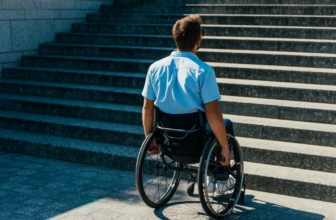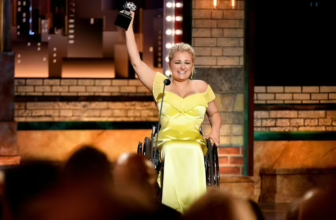When I was a kid, my favorite TV show was MacGyver. Every week, I would watch him find solutions for seemingly insurmountable problems using everyday items. MacGyver is the OG life hacker, and I've always wanted to be just like him. As a woman with cerebral palsy, I've had to develop my own disability life hacks to succeed in a world that isn't designed for me. Here are some reasons why people with disabilities need life hacking skills, and a few you can try to make your life better!
Disability Life Hacks Save Money
Products for people with disabilities are considered “special,” even though millions of us need and use them. As soon as a “medical” or “mobility” label is slapped onto something, the price often triples and it becomes ugly to look at. After all, why should manufacturers bother with aesthetics when they know we have no choice but to buy it? And when these items we use daily and depend upon for mobility break down, parts and repairs cost far more than they would for similar devices such as a car, motorcycle, or lawnmower.
As adults with disabilities or parents of kids with disabilities, what can we do about this? Of course we can and should lobby government officials and push for innovative products, improved insurance coverage and lower prices. But beyond that, we can empower ourselves. We can all use our creative spark to find better, less expensive ways to help ourselves and our families.
Over the years, I have learned to create my own disability life hacks — to design things myself, and to use and modify everyday items to meet my mobility needs. In the process, I learned one of my most important life lessons — the one I always share first with others who are starting along the disability journey. When you have a disability, you have to be your own MacGyver.
Although I do watch the new show, I prefer the OG MacGyver, Richard Dean Anderson. For starters, he successfully rocked a mullet, a feat no other human in history has accomplished. But more importantly, his version of the handy hero is realistic and approachable. His solutions aren't high-tech or more complicated than they need to be. We can watch him and think “hey, I could do something like that.” He helped me believe there are simple, affordable solutions for just about any physical obstacle I face, if I can be creative enough to find them. Here are eight lessons from MacGyver for life with a disability.
1. The simplest solution is often the best one.
MacGyver — especially the 80s version — doesn't depend on high tech devices to solve his problems. Likewise, many disability life hacks are simple and cheap. Don't get me wrong, smart home technology, computers, and cellphones are essential to living well with a disability, but for many everyday tasks, low tech options are more reliable.
Many devices designed especially for people with disabilities are extremely expensive and seem like Rube Goldberg machines. They try to accomplish a simple task with far more bells and whistles than necessary. Most of the time, you can solve the same problem using something you can find around your house or buy for a low price.
Products designed for people without disabilities can be modified for us with a bit of creativity. When I was a little girl, my father adapted a tricycle for me by making wooden sides and a back for the seat. He also designed custom foot plates made out of plywood with Velcro straps and screwed them onto the existing pedals. Now, they do make tricycles designed for “children with special needs” — if you want to pay at least $900. Or you can buy 20 bucks worth of wood and Velcro and spend a couple of hours making a regular children's trike work just fine.
As an adult, my dad made the same footplates and straps for my power-assisted foot bike.
If you think you need a “special” version of something, always look at the existing mass-produced item first and think about how it would have to change to meet your needs. Chances are, making those modifications would be less expensive and less trouble than trying to buy something specifically designed for people with disabilities.





2. One man's trivial gadget is another's lifesaving tool.
MacGyver is famous for taking items that seem useless in a situation and making them life-saving. We are fortunate to live in a time when there are many low-cost, mass-produced devices marketed towards busy able-bodied people, especially gadgets for cooking and cleaning. Here's a secret: their “convenience” products are our path to more independence. Look at home shopping and infomercial products; what may seem like a gimmick to non-disabled people can be tremendously useful for us. Some of my favorite “gadget” disability life hacks include jar openers / lid removers, prescription bottle openers, and utensils with large rubber grips.
3. Don't be afraid to modify your mobility equipment.
For the moment, we are stuck with high prices for some items, like power wheelchairs. But that doesn't mean we have to go without needed features or put up with uncomfortable positioning. All new wheelchairs come with a tool kit for a reason. Don't be afraid to use it! If you're not comfortable making adjustments, find a trusted friend or relative with basic handyman skills to help.
Disability life hacks aren't just about survival. I encourage you to add enhancements to your mobility devices. Get creative! Make your equipment your own with a custom paint job or LED light kit. You can decorate mobility aids such as canes and walkers with patterned duct tape or Cricut vinyl.
4. Learn how your electronic and mechanical devices work.
All of MacGyver's solutions use basic principles of electricity, chemistry, and physics — concepts disability life hackers can learn about, too. I admit, this is an area where I could improve, but if you have any interest in science and math, make the most of it!
Try to learn as much as you can about how your mobility aids, adjustable bed, CPAP, and other medical devices work. Most of us are not mechanics or engineers, but we can still understand the basics and use that information to solve problems in a pinch. Sometimes the solution is as simple as resetting a circuit breaker, waiting for waterlogged electronics to dry, or performing a simple repair. Even if we don't know exactly how to fix a broken mobility device, understanding what is happening can enable us to talk to a repair technician on the phone and possibly resolve a problem.
Regardless of your mechanical aptitude, make sure you understand the backup / manual functions on your essential devices, such as how to disengage the wheels of a power wheelchair or manually operate your van lift. This information can usually be found in the device's owner's manual, but I suggest copying it to a separate paper to keep handy on your refrigerator or in an easily accessible drawer. That way you or a person helping you will quickly know what to do in case of emergency.
Note: Use caution when attempting to repair electronics or other sensitive features, as you might void your warranty or injure yourself or someone else.
5. Have your disability life hacks kit full of handy items ready when you need it.
MacGyver is famous for solving problems with objects he finds just lying around, but those of us who don't live in TV land will probably need to give ourselves a head start. Create a disability life hacking kit containing the items that tend to be most useful for you and make sure it's easy to access when needed. Here's a list of the items I use most frequently, and some unconventional ways I have used them.
Swiss Army Knife — MacGyver always has his on hand; you should too!
Multi-head screwdriver — I carry one in my backpack; you never know when you might need it!
Duct tape — temporary wheelchair and van repairs, attaching items to wheelchair.
Double-sided Gorilla tape — emergency repairs, attaching items to wheelchair, retrieving items from the floor.
WD-40 — lubricating automatic door on accessible minivan and squeaky wheelchair wheels.
Scissors — opening mail and packages, sliding under the tab to open a can of soda.
Dressing stick — pushing items away or pulling them closer, retrieving items from the floor, pulling doors closed by hooking the lever and backing away.
Tweezers — opening plastic door to change mouse battery, picking or peeling plastic off items.
Scissors-style salad tongs — picking up items
Carabiner clips — dog leash clip for hands with reduced dexterity. Attach to drawers for easy opening. Attach to back of wheelchair to hold grocery bags.
Key rings — zipper pulls
Baby wipes — easy, quick cleaning of spills and dust. Keeping wheelchair clean.
Flashlight and lantern — always next to my desk and my bed in case the power goes out. Easier to see under / inside wheelchair controls and compartments when looking for problems or making repairs.
Ink pen — opening envelopes or small compartments.
6. Find local resources that can help.
Many people with disabilities have low incomes and can't afford fancy tools. Thankfully, many communities now have tool libraries or tool sharing groups. For a low fee, you can join and have access to many expensive tools.
Many of us can't build or repair things due to physical limitations. But chances are, we all know someone who can. My dad built a lot of my mobility and positioning equipment when I was growing up. He still helps me now, or asks friends to assist. Since I need personal care assistants, I try to always hire at least one who has basic handy person skills. High school shop classes, vocational schools, universities, and the above-mentioned tool sharing groups are other places to locate someone who can assist for free or at low cost. Maker spaces are a great place to connect and collaborate with local MacGyvers.
If none of those options work, there's always Facebook groups or Craigslist. Screen carefully and look for someone who finds your project idea exciting, or an older person who is looking for something to do and wants to help for the right reasons. Have a friend or relative present when someone new comes over.
7. Share your disability life hacks.
Have you designed a simple product or modification that makes life with a disability easier? Share it with everyone! Post photos and/or instructions and blueprints online so others can replicate your design if they wish. If you have an entrepreneurial spirit, consider starting a business to market your product. We need more people with disabilities creating products for our community and offering them at fair prices.
If you would like to share ideas or get advice from others, the Disability DIY Group on Facebook is a growing resource.
8. It's up to you to solve your problems.
Yes, society is supposed to be accessible. Mobility equipment dealers are supposed to do their jobs by providing quality, correct equipment and adjusting it properly. If essential equipment breaks, it should be fixed promptly. But when that doesn't happen, don't just sit around and complain about it. Do something. Call them every single day if necessary until they respond. Be the squeaky wheel.
And in the meantime, use your newfound disability life hacking skills. Do what you can to make the situation work. Come up with a solution, even if it's a temporary one, so you don't lose your independence. “I don't know how to fix this” is not an excuse. YouTube now has instructions for almost anything. Use the power of social media to find somebody who can come over and build a ramp, or adjust foot rests, or upholster a cushion.
In these uncertain times, when many of us fear having our supports and services cut or taken away completely, I believe it's more important than ever that we find creative ways of helping ourselves and our loved ones. The system should help us, but if it doesn't, we can't just sit around and let ourselves suffer. We have to find a way. I choose to follow the Way of MacGyver.
Founder and Editor-in-Chief of The Ability Toolbox. I received my BA in English from Stanford University and MA in Clinical Psychology from Antioch University Los Angeles, and have worked in entertainment and health media for over 20 years. I also blog about traveling with a disability. As a wheelchair user with cerebral palsy, I am deeply committed to amplifying the voices of the disability community through writing and advocacy.







